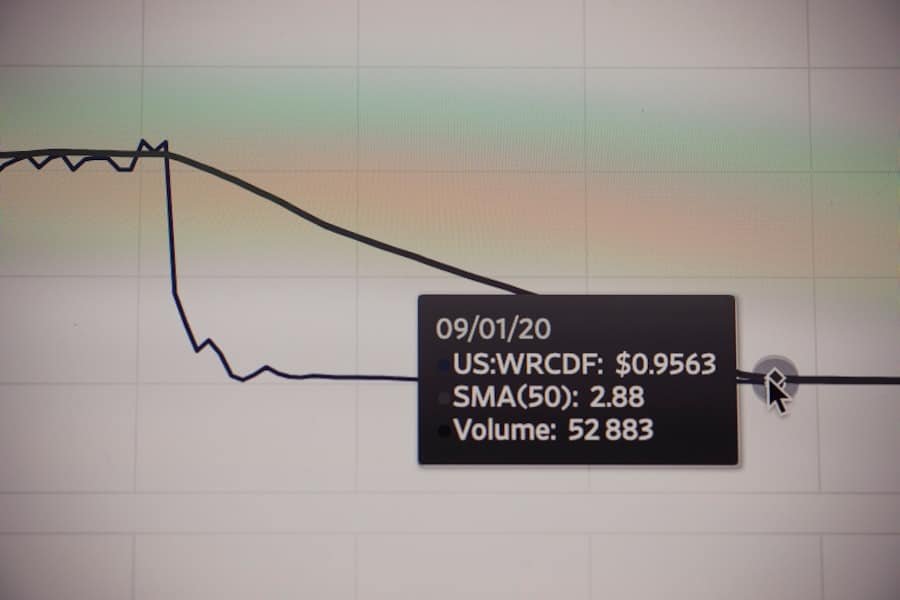Exchange rate fluctuations are changes in the relative value of currencies. These variations result from multiple factors, including economic indicators, geopolitical events, and market speculation. Exchange rates are fundamental to international trade, as they determine the cost of goods and services across countries.
Fluctuations can significantly impact exporters, importers, consumer prices, and overall economic stability. For businesses engaged in international trade, understanding the causes and effects of exchange rate fluctuations is crucial for effective risk management and opportunity maximization. Various factors influence exchange rate fluctuations, such as interest rates, inflation, political stability, and market speculation.
For instance, a country’s currency may strengthen if its interest rates increase, as investors seek higher returns. Conversely, high inflation can weaken a currency by decreasing its purchasing power. Geopolitical events like trade wars, political instability, and natural disasters can also cause exchange rate fluctuations by affecting investor confidence and economic outlook.
Market speculation and sentiment further contribute to these fluctuations, as traders buy and sell currencies based on anticipated future movements. Exchange rate fluctuations are a complex and dynamic phenomenon requiring careful analysis and management in international trade.
Key Takeaways
- Exchange rate fluctuations can have significant impacts on international trade
- Exporters may benefit from a weaker domestic currency, while importers may suffer
- Exchange rate fluctuations can impact consumer prices, leading to inflation or deflation
- Strategies for managing exchange rate fluctuations include hedging and diversification
- Case studies can provide valuable insights into the real-world effects of exchange rate fluctuations
Effects of Exchange Rate Fluctuations on Exporters
Exchange rate fluctuations can have both positive and negative effects on exporters. When a country’s currency depreciates, it becomes cheaper for foreign buyers to purchase goods and services from that country. This can lead to increased demand for exports, as foreign buyers are able to obtain more goods for the same amount of their own currency.
On the other hand, when a country’s currency appreciates, it becomes more expensive for foreign buyers to purchase goods and services from that country. This can lead to decreased demand for exports, as foreign buyers are able to obtain fewer goods for the same amount of their own currency. Additionally, exchange rate fluctuations can impact the profitability of exports, as they affect the cost of production inputs and the revenue from sales in foreign markets.
For example, a depreciating currency can lower the cost of production inputs such as raw materials and labor, making exports more competitive in foreign markets. Conversely, an appreciating currency can increase the cost of production inputs, reducing the competitiveness of exports in foreign markets. Furthermore, exchange rate fluctuations can impact the revenue from exports, as they affect the value of sales in foreign currencies when converted back into the domestic currency.
A depreciating currency can increase the value of export sales in the domestic currency, while an appreciating currency can decrease the value of export sales. Overall, exporters must carefully monitor exchange rate fluctuations and implement strategies to manage risks and capitalize on opportunities in international trade.
Effects of Exchange Rate Fluctuations on Importers

Exchange rate fluctuations also have significant effects on importers engaged in international trade. When a country’s currency depreciates, it becomes more expensive for importers to purchase goods and services from foreign countries. This can lead to increased costs for imports, as importers need to pay more of their own currency to obtain the same amount of goods and services.
On the other hand, when a country’s currency appreciates, it becomes cheaper for importers to purchase goods and services from foreign countries. This can lead to decreased costs for imports, as importers need to pay less of their own currency to obtain the same amount of goods and services. Additionally, exchange rate fluctuations can impact the profitability of imports, as they affect the cost of goods and services purchased from foreign markets.
For example, a depreciating currency can increase the cost of imports, as importers need to pay more of their own currency to obtain goods and services from foreign markets. Conversely, an appreciating currency can decrease the cost of imports, as importers need to pay less of their own currency to obtain goods and services from foreign markets. Furthermore, exchange rate fluctuations can impact the pricing of imported goods and services in the domestic market.
A depreciating currency can lead to higher prices for imported goods and services in the domestic market, while an appreciating currency can lead to lower prices. Overall, importers must carefully assess exchange rate fluctuations and implement strategies to manage costs and maintain competitiveness in international trade.
Impact of Exchange Rate Fluctuations on Consumer Prices
Exchange rate fluctuations have a direct impact on consumer prices in domestic markets. When a country’s currency depreciates, it becomes more expensive for importers to purchase goods and services from foreign countries. This leads to increased costs for imports, which can result in higher prices for imported goods and services in the domestic market.
As a result, consumers may experience inflationary pressures as the cost of living increases due to higher prices for imported products. On the other hand, when a country’s currency appreciates, it becomes cheaper for importers to purchase goods and services from foreign countries. This leads to decreased costs for imports, which can result in lower prices for imported goods and services in the domestic market.
As a result, consumers may experience deflationary pressures as the cost of living decreases due to lower prices for imported products. Furthermore, exchange rate fluctuations can impact the pricing of domestically produced goods and services. A depreciating currency can make domestically produced goods and services more competitive compared to imported products, leading to higher prices for domestic consumers.
Conversely, an appreciating currency can make domestically produced goods and services less competitive compared to imported products, leading to lower prices for domestic consumers. Overall, exchange rate fluctuations play a significant role in shaping consumer prices in domestic markets, impacting inflation rates and purchasing power.
Strategies for Managing Exchange Rate Fluctuations in International Trade
Managing exchange rate fluctuations is essential for businesses engaged in international trade to mitigate risks and capitalize on opportunities. One strategy for managing exchange rate fluctuations is hedging through financial instruments such as forward contracts, options, and swaps. Hedging allows businesses to lock in exchange rates for future transactions, reducing uncertainty and protecting against adverse movements in exchange rates.
Another strategy is diversifying currency exposure by conducting transactions in multiple currencies or denominating contracts in stable currencies. Diversification helps spread risk and minimize the impact of exchange rate fluctuations on business operations. Additionally, businesses can negotiate pricing terms with suppliers and customers to share exchange rate risks or pass on costs through adjusted pricing mechanisms.
This allows businesses to maintain competitiveness and profitability in international trade despite exchange rate fluctuations. Furthermore, businesses can optimize their supply chain and production processes to minimize the impact of exchange rate fluctuations on input costs and operational efficiency. By sourcing inputs from multiple countries or implementing cost-saving measures, businesses can reduce their vulnerability to exchange rate fluctuations.
Case Studies of Exchange Rate Fluctuations on International Trade

One notable case study of exchange rate fluctuations on international trade is the impact of Brexit on the British pound. Following the 2016 referendum on Brexit, the British pound experienced significant depreciation against major currencies such as the US dollar and euro. This led to increased costs for imports into the UK and higher prices for imported goods and services in the domestic market.
As a result, UK consumers experienced inflationary pressures while businesses faced challenges in managing input costs and maintaining competitiveness in international trade. Another case study is the impact of the 2008 global financial crisis on exchange rates and international trade. During the crisis, many currencies experienced sharp fluctuations due to economic uncertainty and market volatility.
Exporters faced challenges in managing revenue from sales in foreign markets while importers grappled with increased costs for imports. The crisis highlighted the importance of effective risk management strategies for businesses engaged in international trade to navigate exchange rate fluctuations and maintain financial stability.
Conclusion and Future Outlook for Exchange Rate Fluctuations in International Trade
In conclusion, exchange rate fluctuations play a critical role in shaping international trade by impacting exporters, importers, consumer prices, and overall economic stability. Understanding the causes and effects of exchange rate fluctuations is essential for businesses to effectively manage risks and capitalize on opportunities in global markets. By implementing strategies such as hedging, diversification, pricing negotiations, and supply chain optimization, businesses can mitigate the impact of exchange rate fluctuations on their operations.
Looking ahead, exchange rate fluctuations are likely to remain a key consideration for businesses engaged in international trade as geopolitical events, economic indicators, and market sentiment continue to influence currency movements. Businesses will need to stay vigilant and adaptable in managing exchange rate risks while seeking innovative solutions to navigate dynamic global markets. By staying informed and proactive in addressing exchange rate fluctuations, businesses can position themselves for success in international trade amidst evolving economic landscapes.
If you’re interested in learning more about the impact of exchange rate fluctuations on international trade, you should check out The Econosphere’s blog. They have a great article discussing how exchange rate movements can affect the competitiveness of a country’s exports and imports. You can find the article here. It’s a fascinating read that delves into the complexities of global trade and the role that exchange rates play in shaping it.
FAQs
What is exchange rate fluctuation?
Exchange rate fluctuation refers to the changes in the value of one currency in relation to another currency. These fluctuations occur due to various factors such as supply and demand, economic indicators, geopolitical events, and government policies.
How does exchange rate fluctuation impact international trade?
Exchange rate fluctuations can have a significant impact on international trade. When a country’s currency depreciates, its exports become cheaper for foreign buyers, leading to an increase in export volume. Conversely, when a country’s currency appreciates, its exports become more expensive for foreign buyers, leading to a decrease in export volume. This can also affect import volumes as well.
What are the effects of exchange rate fluctuations on businesses engaged in international trade?
Exchange rate fluctuations can affect businesses engaged in international trade in several ways. They can impact the cost of imported raw materials and components, the competitiveness of exported goods, and the profitability of foreign investments. Businesses may need to adjust their pricing strategies, hedge against currency risks, or seek out new markets to mitigate the effects of exchange rate fluctuations.
How do exchange rate fluctuations impact consumers?
Exchange rate fluctuations can impact consumers by affecting the prices of imported goods and services. When a domestic currency depreciates, the cost of imported goods and services may increase, leading to higher prices for consumers. Conversely, when a domestic currency appreciates, the cost of imported goods and services may decrease, leading to lower prices for consumers.
What are some strategies to mitigate the impact of exchange rate fluctuations on international trade?
Businesses engaged in international trade can use various strategies to mitigate the impact of exchange rate fluctuations. These include entering into forward contracts, using currency options and futures, diversifying their markets, and engaging in natural hedging by matching revenues and expenses in the same currency. Additionally, businesses can also consider setting prices in the currency of their trading partners to reduce exchange rate risk.








